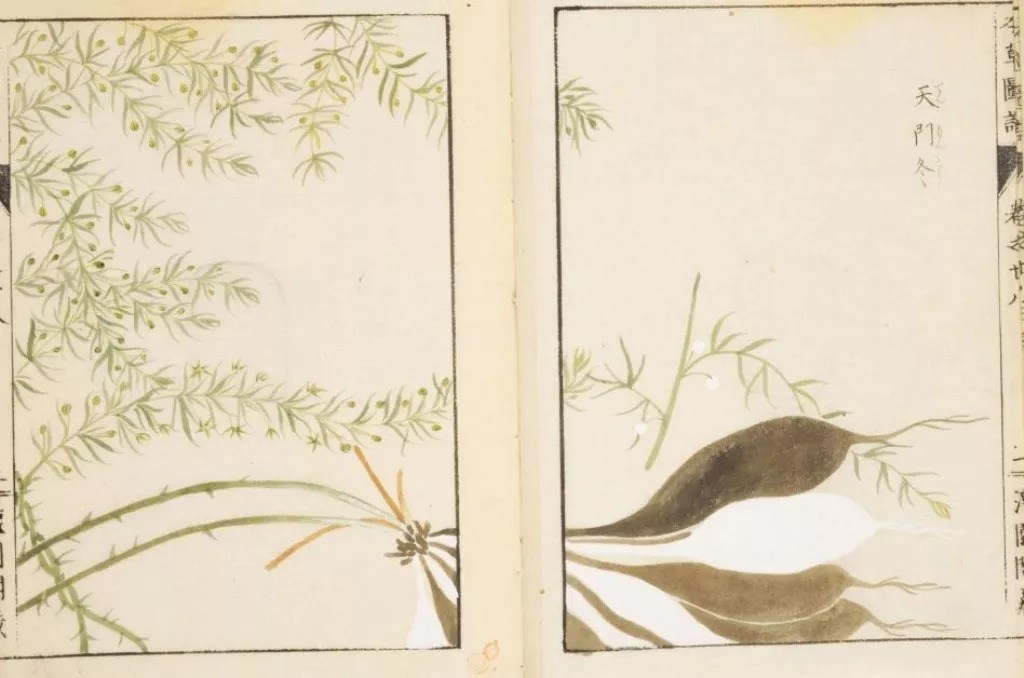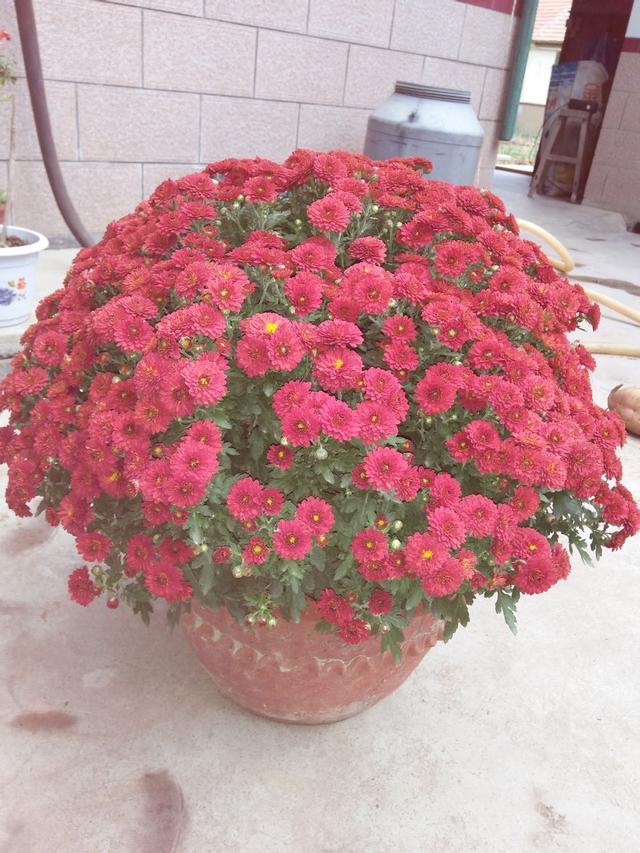Jianglian shakes the white feather, the thorn vine and the green silk.

In the twenty-ninth year of Kaiyuan (741), Du Fu (712-770), who was nearly thirty years old, traveled to Qi and Zhao to search for famous mountains and scenic spots. Impressed by the quiet and quiet residence of Si Gong, he wrote this poem "Si Shang Mao Zhai":
Under the thatched cottage of Si Gong, you can write new poems.
Pillow into the forest remote, tea melon stay guests late.
Jiang Lian shakes white feathers, Tian Ji vines green hair.
It is difficult to pay for evasive words when you are empty and ask questions.
It is not known who he is, but at least he is a monk who is good at Buddhism. [1]The neck couplet "Jiang Lian shakes white feathers, Tian Ji tendrils green hair" is a description of the scenery around Si Gong's hut, in which two kinds of plants are mentioned,"Jiang Lian" refers to lotus, shaking white feathers, and shaking of Jiang Lian. But at first I thought that "river lotus" refers to a freshwater fish "silver carp", so the scene of silver carp diving on the river in my hometown stirred up waves came to mind.
What kind of plant is Asparagus root?
Asparagus root-herbal atlas. Iwazaki Kanen
1
Asparagus cochinensis, often abbreviated as Asparagus, is a climbing plant of the genus Asparagus in the Liliaceae family. For the famous Chinese medicine, medicine part is its swollen root block.
Why did Asparagus get its name? According to "Notes on the Interpretation of Plant Names," the word "heaven" often takes the meaning of nature in plant names,"door" has the meaning of red, describing the dark reddish brown of the expanded part of the root skin,"winter" is the pictograph of eaves ice, just like the spindle-shaped root of asparagus. Therefore, Asparagus is "saying that its medicine is naturally produced and with red ice winter ear." [2]
Asparagus leaves and spindle roots
"Compendium of Materia Medica" said: "The luxuriant grass for the, vulgar door." "Er Ya·Shi Cao" cloud: ", winter." Guo Pu notes: "winter, a full winter." Xing Bing of Song Dynasty believed that the different sounds of "" and "Men" were the same. [3]And "red millet," is a millet, itself with red meaning.
It can be inferred from this that the red "door" used to describe its root skin should be a loan of "" because the writing of the word "" is really complicated.
"Winter"
The name Asparagus sounds rather overbearing.
During the Jiaqing period of Qing Dynasty, someone wrote a very interesting novel "Romance of Plants and Spring and Autumn Annals," which combined vegetation with historical romance, contained more than 300 kinds of Chinese herbal medicines, more than 100 kinds of Chinese herbal medicines with plots, some characters 'appearance basically matched with the appearance of Chinese herbal medicines, and the division of enemy camps was also related to whether they had their own toxicity. [4]
In the twenty-fourth chapter of the novel, the character of Asparagus is set to be the bandit leader of Shujiao Mountain in Xuanzhou of Han Dynasty."Robbing houses, looting people's wealth, killing and setting fire to thousands of bandits" want to overthrow the court and claim to be a tyrant. In the twenty-fifth chapter, he is defeated in battle with the court army and commits suicide. In other words, if the "Romance of Vegetation Spring and Autumn" is made into a TV series, Asparagus will not survive two episodes at most.
Is it consistent with the medicinal properties of Chinese herbal medicine to set Asparagus root as an insignificant negative faction? At least, Asparagus is nontoxic, which is different from the bandit monk Mandala under Asparagus in the novel.
2
Jiang Lian shakes white feather, sky thorn vine green hair. And why is Asparagus named Tian Ji?
Historically, there has been debate about the interpretation of the "heavenly thorn" in this poem. Zheng Qiao (1104-1162), a scholar of the Southern Song Dynasty, believed in Tong Zhi that Tianji was the name of willow, which Yu Xin's poem "willow on the bank is covered with green hair" can prove. But Yang Shen (1288-1559), a Ming writer, refuted this view in his Sheng An Shi Hua:
Willow can talk about silk, only in early spring, if tea melon stay guest day, Jiang Lian white feather Chen, must be deep summer, willow has old leaves thick yin, can not talk about silk. If the man cloud, can dialect rabbit silk, Wang melon, can not say willow, day thorn is not willow Ming. According to "materia medica suoyin" cloud: "radix asparagus, in the east yue name epimedium, in the south yue name stemona, in the west yue name tube pine, in the north yue name dian ji." Heaven and earth, sound close to each other and name each other. This solution is closer. [5]
In addition, many documents contain asparagus also known as "Dian Ji", so the name "Tian Ji" is because "Tian" and "Dian" sound close. The original meaning of "thorn" is spiny jujube tree on the stem, and the base of Asparagus scale-like leaves does have hard thorns about 2.5-3.5 mm long [6], so the name "thorn" has its reason. This is a climbing vine with thorns.
Yu Shiling's poem "Jiang Lian Shakes White Feather, Sky Spine Tendrils Green Silk" analyzes the difference between willow and vine as images in the history of Chinese poetry, so as to explain that the vine asparagus belongs to "vine" rather than "willow":"willow has become a symbol of home, market, traditional and human life... On the contrary, the image of vine is often used to express and set off the quiet environment and the scattered and scattered residents." [7]
Asparagus this kind of "vine", really grows in the quiet environment, like a hermit. In fact, there are not many poems with the image of "Heavenly Thorn". Du Fu wrote Asparagus in his poems, probably because Asparagus is the real scene in the Maozhai of Si Gong.
Yu Shiling also mentioned that Du Fu and many poets of his contemporaries also talked about rattan when describing Buddhas, temples and monks, such as Wang Wei's "Guo Fu Zen Master Lan Ruo":"The peak outside the bamboo is slightly brighter, and the vine shade water is cooler." Wang Changling's "Zhu Guan You Xiang Yin Temple":"The mountain hall is empty, and the green radish changes the wind and rain." Cen Shen's "Visit to Yun Gong via Huayue Temple":"Bamboo diameter thick green moss, pine door plate wisteria." Li Bai's "will travel Hengyue, Hanyang Shuangsong Pavilion, stay in the family brother Budur talk about Hao":"Yan Luo knot secluded residence, cut bamboo around Fang Cong." Meng Haoran's "Summer Distinguish Jade Master Mao Zhai":"Bamboo shoots deep, rattan frame lead long." And "Su Li Gong Fang":"Moss Stream Spring Full, Luo Xuan Night Moon." [8]Whether or not there is asparagus in the above images of "rattan", we cannot judge.
Si Gong is a monk, and later poetry appears "Tian Ji", but also more related to Buddha, monk, temple. For example, Zhang He of the Ming Dynasty "Visit Xiaoan Zen Master to Dongting Orange for":"The evening rain in front of the eaves touches the thorns, and the spring breeze outside the mat moves the heather."
Feng Menglong (1574-1646) compiled a book titled "A Thousand Poems of the Anthology of Oleander," including a poem titled "Silk Sky Thorn":
Looking back to see Zijie a lover, I don't waste this morning burning incense, his clothes neat, age is fragrant, eyebrows, two hanging intestines. Sister: Lang Ya! If you are willing to visit me, I will not remember, silk days thorn door wall.
The Song of the Thousand Poems of Oleander Thimble is a folk song of Wu composed with the tune of Oleander. It borrows the rhetorical technique of thimble (the last word of each folk song is the first word of the next one) and ends with a sentence from the Song of the Thousand Poems. Most of them sing about love between men and women, which was more popular in the late Ming Dynasty.
"Silk Sky Thorn" This ditty is quite similar to the scene where Cui Yingying and Zhang Sheng met for the first time in Pujiu Temple in "The West Chamber","How can she make a turn when she is going to fall in love". The last sentence of Xiaoqu comes from a seven-character quatrain by Wang Qi, a poet of the Southern Song Dynasty: "A clump of plum powder removes residual makeup and smears new red begonia." When the flowers bloom, the thorns grow on the wall." Originally, it was a feeling of sadness, but it was used in folk songs. The "silk sky thorn" that climbed over the wall became a self-portrayal of the young woman's bold pursuit of love.
Because this scene also takes place in the temple, it is the "sky thorn" out of the wall, not the "red apricot".
asparagus flower
3
Asparagus root as a medicinal material, in the book in the late han dynasty medical book "famous doctor bielu" ranked top grade, with "go cold and heat, nourish skin, benefit strength" and other effects. However, in the biography of immortals, asparagus is given mythological color, which makes people rejuvenate and prolong life.
About the book in the Western Han Dynasty,"Liexian Zhuan" said: "Red neck son eat asparagus, teeth fall regeneration, fine hair comeback." The Taoist classics "Baopuzi" written by Ge Hong of the Eastern Jin Dynasty said: "Du Ziwei served Asparagus root, 18 concubines, 140 children, 300 miles a day." His "Biography of Immortals" said: "Gan Shi, Taiyuan people, clothing Asparagus, in the world for more than 300 years." These records of immortal magic cannot be trusted, but when put into Du Fu's poems, they have a different flavor: the heavenly thorn in the monk Mao Zhai turned out to be a legendary herb with various magical functions.
Radix op-herbal atlas. Iwazaki Kanen
In addition to Radix Asparagi, there is also a plant with similar name, named Ophiogon, officially named Ophiogon japonica in Chinese, belonging to the same family and different genus as Radix Asparagi, which is a herb of Liliaceae and Ophiogon genus. Radix opis also a traditional Chinese medicine, the medicinal part is also the root, which is oval or spindle shaped, smaller than the root block of Radix Asparagi, and the leaf base generates clusters and leaves. According to the "plant name interpretation notes," the name of wheat is due to its leaf shape such as wheat. [9]
Radix opfruit
Radix opis evergreen, shade resistant, cold resistant, drought resistant, pest resistant, mostly used for landscaping. Wuda University and Huake University have mountains. There are many kinds of plants on the slopes. This season, Luojia Mountain and Guizi Mountain should be "trees are autumn, mountains only fall" bar. That piece of ophora tuber on the hillside under the shade should bear fruit, sky blue, like the water of South Lake.
2018-8-26
[1]The Qur 'an says,"Who is the Lord?" Buddha said: Bodhisattva is a person who is dedicated to the practice of Anu Bodhi and whose mind is not scattered. He is a person with a good name." The author compares himself with Xu Xun in the tail couplet, and compares Zhi Dun, an eminent monk in the Eastern Jin Dynasty, with Si Gong. "Shi Shuo Xin Yu":"Zhi Dun, Xu Xun, a total of Kuaiji Wang Qi, Zhi for the Master, Xu for all speak." The Qur 'an says,"The Qur' an is not a simple, simple, and simple matter." If you ask for help, you will not be able to escape." See Qiu Zhaoao's Detailed Notes on Du Shi (Qing Dynasty), Zhonghua Publishing House, October 1979, first edition, Volume 1, page 17. Xu Xun was a metaphysical poet in the Eastern Jin Dynasty. Although Zhi Dun was a monk, he was familiar with the learning of Lao Zi and Zhuang Zi. Influenced by the style of Qingtan at that time, he made friends with famous people and participated in Qingtan.
[2]Xia Weiying: Notes on the Interpretation of Plant Names, Agricultural Publishing House, 1st Edition, December 1990, pp. 304-305.
[3](1999), pp. 276 - 277.
[4]Huang Ting: Research, Nanjing Normal University, Master's thesis, 2016.
[5](Qing) Qiu Zhaoao: Detailed Notes on Du Shi, Zhonghua Publishing House, October 1979, Volume 1, page 17.
After verification, Stemona, Epimedium and so on are indeed alias of Asparagus root here. The ancients confused them, probably because the medicinal parts are similar in shape, among which Stemona root and Asparagus root are most confused.
[6]Editorial Committee of Flora of China, Chinese Academy of Sciences: Flora of China, Science Press, 2004, Vol. 15, p. 106.
[7]The Journal of Research on Du Fu (1995).
[8]The Journal of Research on Du Fu (1995).
[9]Xia Weiying: Notes on the Interpretation of Plant Names, Agricultural Publishing House, 1st Edition, December 1990, p. 305.
About the author: Jianghan Tang Tang, enterprise employee/art museum public education volunteer/freelance writer, now living in Beijing.
Graphic Editor: Jiang
This work is licensed under the (CC BY-NC-ND 4.0) License.
Please keep the above statement
- Prev

The flowers that are most likely to burst into pots bloom for two months, which are beautiful, spectacular and easy to raise.
Guide green potted plants is a necessary embellishment of home life, raising some flowers and plants at home, many benefits, not only can beautify the room, but also happy mood. Hua Sheng potted Diary No. 1253 will introduce you to a flower that is most likely to burst into a pot.
- Next

How to prevent soil hardening basin soil agglomeration after how to deal with
After potted plants have been maintained for a period of time, the soil is prone to agglomeration. Watering the soil will flow directly from the edge of the seam. There is no way to irrigate the water at all. There will also be a white sediment on the soil surface.
Related
- Wuhan Hospital Iron Tree Blooming Result Was Instantly Frightened by the Gardener Master
- Which variety of camellia is the most fragrant and best? Which one do you like best?
- What is the small blue coat, the breeding methods and matters needing attention of the succulent plant
- Dormancy time and maintenance management of succulent plants during dormancy
- Minas succulent how to raise, Minas succulent plant pictures
- What are the varieties of winter succulent plants
- How to raise succulent plants in twelve rolls? let's take a look at some experience of breeding twelve rolls.
- Attention should be paid to water control for succulent plants during dormant period (winter and summer)
- Watering experience of twelve rolls of succulent plants
- Techniques for fertilizing succulent plants. An article will let you know how to fertilize succulent plants.

